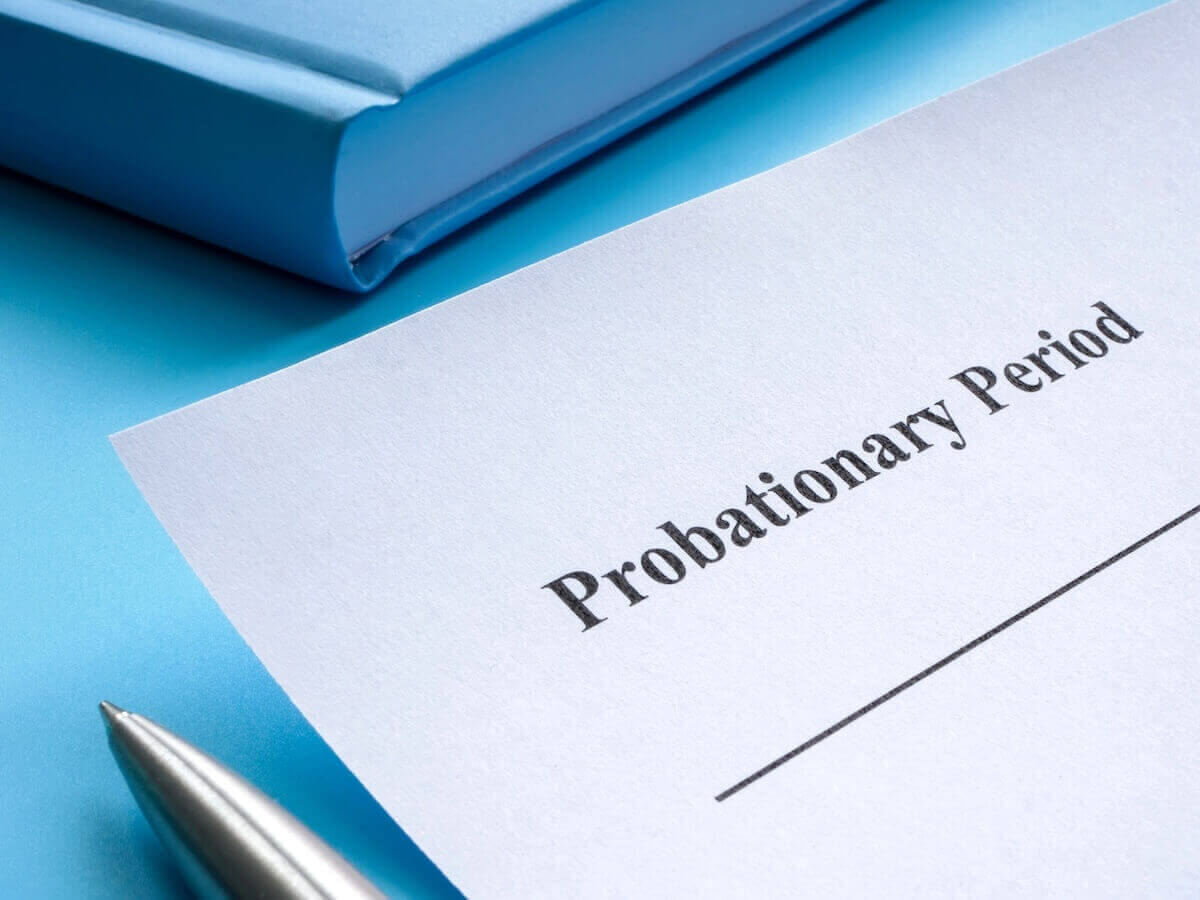Probationary Periods and the Federal Workforce
What is the probationary period for federal employees? The Code of Federal Regulations stipulates:
The agency shall utilize the probationary period as fully as possible to determine the fitness of the employee and shall terminate his or her services during this period if the employee fails to demonstrate fully his or her qualifications for continued employment.
Termination of an individual serving a probationary period must be taken in accordance with subpart D of part 752 of this chapter if the individual has completed one year of current continuous service under other than a temporary appointment limited to 1 year or less and is not otherwise excluded by the provisions of that subpart.
The probationary period is the final step in the hiring process. Its purpose is to assess an employee’s performance, conduct, and suitability for permanent federal employment. During this time, supervisors are supposed to determine whether the employee will successfully perform the job requirements before the employment protection process conferred on career federal employees is granted to them.
The probationary period for federal employees has taken on a new meaning under President Trump. That is because it is quicker and easier to fire a probationary employee than a regular career federal employee because of the limited appeal process outlined for them in regulations.
Agencies sometimes advise supervisors that if they have questions about the value of an employee, they should terminate that employee during the probationary period. After full employment protection is awarded, the removal process is longer, more challenging, and more time-consuming. In some cases, the appeals process may drag on for a year and often much longer.
With an administration’s goal of significantly reducing the size of the federal workforce, the number of probationary employees working for the federal government became a source for reducing the size of the federal workforce without using the reduction-in-force process or firing employees who can trigger an extensive and expensive appeal process. These appeals can last for years and may ultimately result in a substantial backpay award if the employee prevails in the appeal.
While the defined appeal process for probationers is very limited, the process of terminating a large number of federal employees still in their probationary process has had issues. Firing these employees has generated more OPM guidance, court cases, and disrupted the lives of tens of thousands of employees.
Many of these employees were likely surprised by the federal government’s decision to proceed with reducing the workforce by automatically terminating them during their probationary period. The complex and numerous cases emanating from the court system have resulted in employees who were fired, some of whom were rehired, and still others placed on paid leave, facing an uncertain future.
The litigation, as often happens, sometimes morphed into answering side issues such as whether the Office of Personnel Management (OPM) had the authority to terminate probationary federal employees or if that power resided with the employing agency.
The answer to how many of these probationary employees who were fired will remain as former federal employees or if they will be rehired is still an open question. Litigation is attempting to define what this appeal process should be or if there is an actual appeal process under these circumstances.
This means the eventual resolution may focus on technical details rather than a straightforward answer.
New Executive Order on Probationary Periods
With the increased focus on how a federal probationary period is utilized, or how it has not been utilized, the saga of probationary employees and the future structure of the probationary period is still ongoing.
Here is the latest step in the saga of the probationary period.
On April 24, 2025, President Trump signed an Executive Order entitled “Strengthening Probationary Periods in the Federal Service,” introducing significant changes to the probationary and trial periods for Federal employees.
The Executive Order states:
The Government Accountability Office has documented, however, that agencies have not been using probationary and trial periods as effectively as they could to remove appointees whose continued employment is not in the public interest. As a result of this failure to remove poor performers, agencies have often retained and given tenure to underperforming employees who should have been screened out during their probationary period.
Conditions of good administration require that agency approval should be required before probationary employees become tenured Federal employees. As the Merit Systems Protection Board recommended in its 2005 report The Probationary Period: A Critical Assessment Opportunity, there should be “procedures so that a probationer does not automatically become an employee in the absence of agency action.” And in the absence of agency certification that the probationer will be an asset to the Government, “the probationer’s employment should automatically terminate upon the expiration of the probationary period.” This order directs this commonsense change.
The Executive Order intends to change the system that resulted in the government hiring new employees who should have been screened out during the probationary period. To achieve this, agencies must verify the suitability of employees before granting them permanent career status, rather than allowing tenure to be conferred by default. In part, this Executive Order may serve as a means to prevent other procedures from being implemented in the future, should a court decision be issued that could create further confusion or problems.
The federal government can be counted on to have rules governing most human resources processes. The probationary period is no exception.
The Executive Order eliminates section 2.4 of part 2 of title 5, Code of Federal Regulations to remove provisions that limited agency authority over probationary employees. In its place, the Order establishes Civil Service Rule XI.
- Implementation of Civil Service Rule XI:
- Civil Service Rule XI replaces subpart H of part 315 of title 5. This rule applies to probationary periods in the competitive service and trial periods in the excepted service, excluding the Senior Executive Service.
- Affirmative Certification Requirement:
- Agencies must provide written certification affirming that an employee’s continued service benefits the public interest. Without certification, employment automatically terminates at the end of the probationary or trial period.
- Clarified Probationary and Trial Periods:
- Employees must complete a 1-year probationary period unless they meet specific exemptions. For excepted service employees, the trial period extends to 2 years for non-preference eligibles.
- Enhanced Evaluation Process:
- Agency heads or designated officials must evaluate employees’ performance, conduct, and alignment with organizational goals at least 60 days prior to the conclusion of the probationary or trial period.
- Burden of Proof on Employees:
- Employees bear the responsibility of demonstrating why their continued employment serves the public interest.
- Streamlined Appeals Process:
- The Office of Personnel Management (OPM) will define limited circumstances under which terminations during probationary or trial periods can be appealed. This appeals process “shall be the sole and exclusive means of appealing terminations during probationary or trial periods.”
Implications for Federal Employees
The new Executive Order is largely the result of events that have occurred since the Trump administration utilized the limited appeal process available to probationary employees to reduce the size of the federal workforce.
As outlined in the Executive Order, agencies were not effectively utilizing the probationary period to prevent hiring unsatisfactory federal workers. Instead, agencies often allowed the probationary period to end without a thorough review of new employees who were benefiting from the extensive federal appeals available to career federal employees.
These new requirements for agencies place an affirmative responsibility to review an employee’s performance. And, instead of the process ending with an automatic hiring of the employee, the process is reversed. An employee will automatically be terminated, instead of being hired as a career federal employee, unless the agency has taken the necessary steps to approve an employee’s performance.
These are some of the implications of the Executive Order:
- Increased Accountability: New hires will face more rigorous assessments during their probationary or trial periods. Agencies are now required to actively decide on an employee’s future rather than passively allowing tenure.
- Performance-Based Retention: Agencies have greater discretion to terminate employees who fail to meet performance expectations, thereby reducing the bureaucratic hurdles in making these decisions.
- Proactive Engagement: Employees should expect formal meetings to discuss their performance at least 60 days before the end of their probationary or trial period, offering an opportunity to receive feedback and address areas for improvement.
- Limited Appeal Rights: The streamlined appeals process focuses on efficiency, potentially reducing lengthy legal disputes over terminations during these periods.
Effective Date and Implementation
The Executive Order took immediate effect on April 24, 2025. However, provisions related to employee evaluations and certification requirements (Sections 5(b) through 5(d) and Civil Service Rule 11.5) become effective 90 days from the order’s date.
Conclusion
This Executive Order represents a significant shift in Federal employment policy, emphasizing performance, accountability, and public service efficiency. Federal employees, especially new hires, will be impacted by these changes and should proactively engage with their supervisors to ensure they meet performance expectations throughout their probationary or trial periods.
Will there be delays in implementing these new requirements?
Federal employee unions routinely litigate new requirements for the federal workforce established by the Trump administration. Whether they will view these new changes as worthy of their time and money to try to eliminate or change or whether they will focus on the numerous existing court cases they are already pursuing remains to be seen. If appeals are reviewed in district courts, as seems likely, the appeal process through the legal process and to the US Supreme Court is likely to delay any final resolution of how the probationary period will work for future career federal employees.





